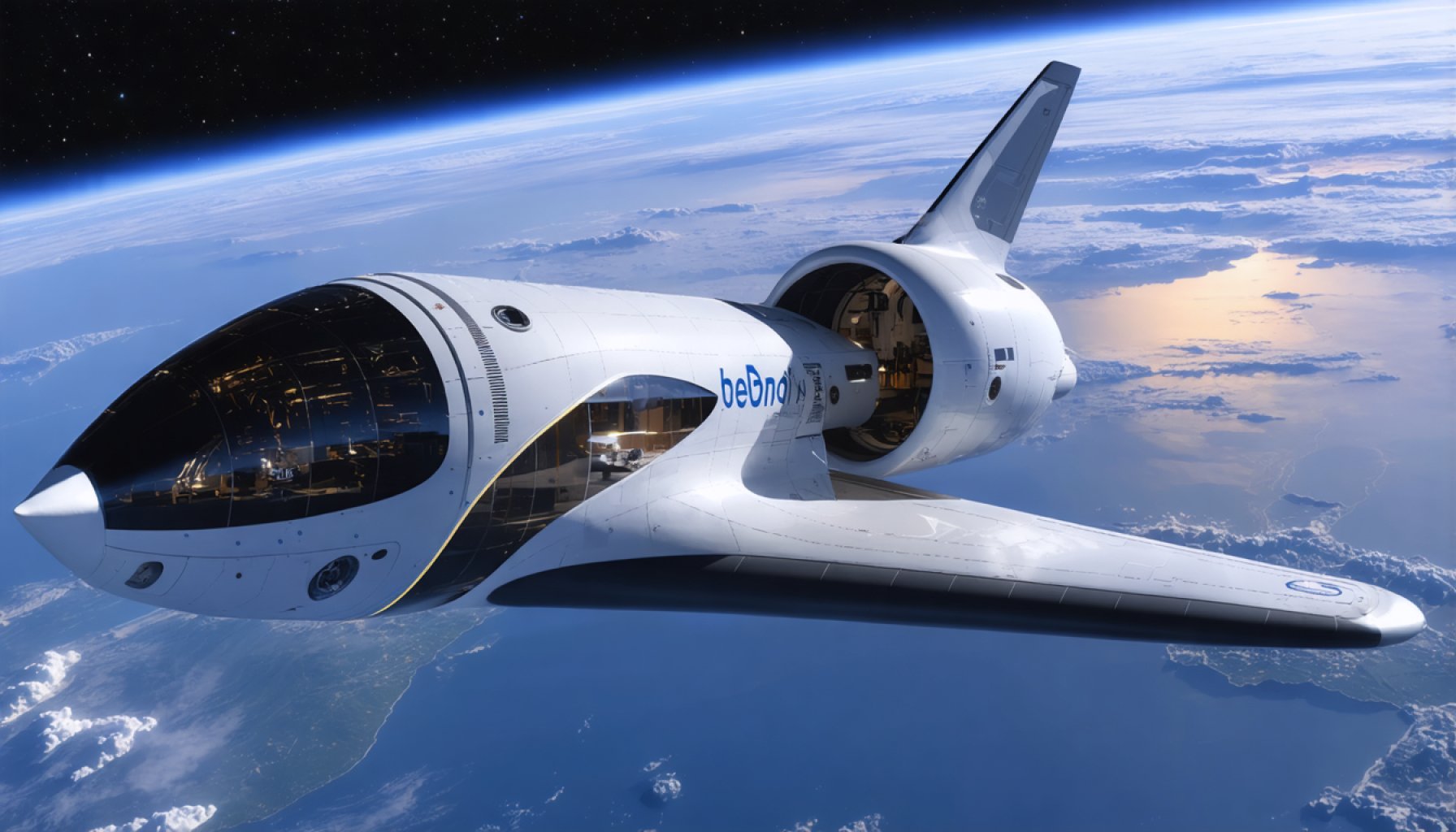- Blue Origin, founded by Jeff Bezos, offers private space tourism experiences, positioning itself as a leader in this elite field.
- Passengers can experience an 11-minute journey into space, reaching beyond the Kármán line, around 62 miles above Earth.
- The cost ranges from $200,000 to $300,000, with earlier flights auctioning seats for millions.
- The New Shepard spacecraft provides an autonomous flight, allowing passengers to fully immerse in the experience of weightlessness.
- Travelers must meet specific health requirements to endure the physical demands of the trip, including rapid acceleration and deceleration.
- Blue Origin aims for broader accessibility in the future, hoping that advancements in technology will lower costs and invite more participants.
For those yearning to touch the stars, Blue Origin presents a tantalizing opportunity. Jeff Bezos’ brainchild, Blue Origin, propels private citizens beyond the earthly confines, allowing them to experience the cosmos—albeit with a significant financial commitment. This venture positions them not only as pioneers of space tourism but as gatekeepers to an elite realm where the curvature of the Earth beckons just beyond spacecraft windows.
Picture this: You’ve secured your passage with a deposit steeped at $150,000, and the anticipation builds as you prepare to cross the Kármán line—62 miles above our planet. The journey spans a brief 11 minutes, yet within this short window, the vastness of space unfolds. By bidding millions for a seat, as one enthusiast did during Blue Origin’s 2021 maiden flight, or opting for the more standard fare of $200,000 to $300,000, passengers indulge in a spectacular paradox: the rarity of weightlessness paired with panoramic views of Earth.
Unlike Virgin Galactic or Space Perspective, Blue Origin’s New Shepard spacecraft offers a unique autonomous experience. Imagine foregoing the distraction of piloted flight, instead immersing completely in the moment—the gentle drift in microgravity, the sprawling blue below, contrasted against the infinite black. Such is the allure that once was best left to the domain of astronauts alone.
Beyond the fiscal barrier, personal readiness plays a crucial role. Prospective passengers must meet health standards to manage the rigors of rapid acceleration and deceleration. It’s not just about the price but the preparation—mental and physical—for a journey that is utterly transformative.
While these voyages remain the privilege of a select few, Blue Origin’s broader vision aims for inclusivity. As technology advances and competition flourishes, dreams of space travel for many more inch towards accessibility. The question lingers: How soon will these celestial experiences drop in price, inviting a wave of aspiring space tourists to catch the shooting stars? Until then, the dream remains a luxurious, rarefied pursuit, merging the best of modern technology with the timeless mysteries of space.
Blue Origin: The New Frontier in Space Tourism
Overview of Blue Origin’s Space Tourism
Blue Origin, founded by Amazon’s Jeff Bezos, has been at the forefront of commercial space travel, offering a once-in-a-lifetime experience beyond Earth’s atmosphere. The company’s New Shepard spacecraft allows private citizens to cross the Kármán line, the boundary of space, providing an unparalleled perspective of our planet. However, the privilege of touching the stars comes with a significant price tag, requiring both financial readiness and physical resilience.
Key Differences: Blue Origin vs. Competitors
While companies like Virgin Galactic and Space Perspective also promise space travel, Blue Origin’s New Shepard offers a distinct autonomous trip. Without a pilot onboard, passengers on New Shepard can fully engage with their environment, maximizing the sensory experience of floating in microgravity and admiring Earth from a unique vantage point—62 miles above sea level.
Pros and Cons Overview
Pros:
– Unique Experience: Autonomous journey allows complete immersion in the experience.
– Safety Record: New Shepard has undergone numerous successful test flights.
– Pioneering Adventure: Participate in the novel experience of commercial space travel.
Cons:
– High Cost: Current ticket prices range from $200,000 to $300,000, with some auctions reaching millions.
– Physical Requirements: Health screenings are necessary to ensure the ability to withstand the stresses of space travel.
– Short Duration: The trip lasts about 11 minutes, albeit packed with memorable experiences.
Preparing for Your Flight
1. Financial Planning:
Start saving early if commercial space travel is a goal. Consider financial products specifically designed to help you achieve high-cost dreams like this one.
2. Physical Fitness:
Ensure you meet health criteria by maintaining cardiovascular health and core strength. Consult with a physician familiar with the demands of space travel.
3. Mental Readiness:
The journey can be emotionally exhilarating and potentially overwhelming. Engage in stress-reducing activities like meditation or mindfulness leading up to your flight.
Market Trends and Future Opportunities
The space tourism market is evolving rapidly. As Blue Origin continues developing its technologies, the cost of space travel is expected to decrease. Technological advancements and increased competition from other space tourism companies could democratize access in the coming decades.
Real-World Use Cases and Life Hacks
– Bucket List Experiences: Space travel is becoming a sought-after experience for the rich and adventurous looking to fulfill their ultimate bucket list.
– Unique Wedding or Event: Some are considering hosting monumental life events in space to make unforgettable memories.
– Inspiration for Study: Younger generations are inspired by stories of courage and exploration, potentially steering them toward STEM fields.
Conclusion and Tips
For those dreaming of touching the stars, Blue Origin offers an exciting, albeit expensive, opportunity. Until prices become more accessible, prospective space tourists can prepare by staying physically fit and financially savvy. As the space tourism industry grows, keep an eye on developments that could bring this extraordinary experience within reach.
With continued innovation, the final frontier may soon be open to many more dreamers ready to defy gravity.
